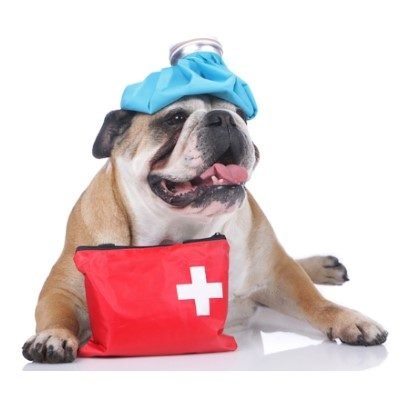
It’s important to be prepared for any emergency situation with some basic knowledge of dog first aid, CPR, and poisoning. Knowing what to do in case of an emergency could be the difference between life and death for your beloved pet. Let’s break down how to provide basic dog CPR and first aid for your pup.
First Aid
For any wound care needed, such as cuts or scrapes, flush with clean water and pat dry with a clean cloth before applying an antibacterial ointment and gauze wrap as needed, depending on the severity. If possible, bring your pup to a vet soon after any injury occurs so they can assess further needs, such as stitches or medication, if necessary.
CPR
CPR is an excellent skill to possess as a dog owner, as it can help save your furry friend’s life if he or she stops breathing or has no pulse. To begin, use two fingers to check for a pulse at the inside of their hind leg near the thigh bone. If there is no pulse, you will need to start chest compressions immediately. If you do feel a pulse, move on to administering rescue breaths. Place your mouth over the nose and blow air into the nostrils until you see the chest rise (about one full second). After each breath, check for pulses again continuously until help arrives.
Chest Compressions
If there is no pulse present in your pup when checking the inside of their hind leg near the thigh bone, then chest compressions must be administered immediately. Place one hand over the other and place them both on top of the rib cage behind their hearts—this is where you will apply pressure when performing chest compressions. Push down firmly but not too hard—about 1/3–1/2 of the depth of their chest should do it—and release quickly so that blood can flow back into their heart chamber during that brief respite between pressures and pushes. Perform this 30 times at about 100–120 presses per minute. You may also find it helpful to practice on a stuffed animal with fur similar to that of your pup so that you are comfortable with proper technique if an emergency arises!
Poisoning
If you think your dog has consumed some type of poison, get him or her to the vet right away. If you are unable to do so,the ASPCA Animal Poison Control Center is available 24 hours a day, all year, for poison-related situations. Their phone number is (888) 426-4435, and a consultation fee will apply.
The following may be signs of dog poisoning:
- Diarrhea or blood in the stool (either bright red blood or dark black tarry stools)
- Vomiting or loss of appetite
- Seizures or tremors
- Behavioral changes (lethargy or unsteadiness when standing or walking; hyperactivity)
- Bruising or bleeding (best found in areas of little or no hair, such as the gums, inside the ear flaps, and inside the groins; nose bleeds or bloody urine)
- Finding of unusual material in a dog’s stool, such as peculiar green or corn-like substances, which might be rodenticide ingestion.
In the event of an emergency, being aware of everything mentioned in this article could potentially save your dog’s life. That’s why a caring pup parent should be prepared. Take some time to familiarize yourself with what steps should be taken in case something unexpected happens down the line!
